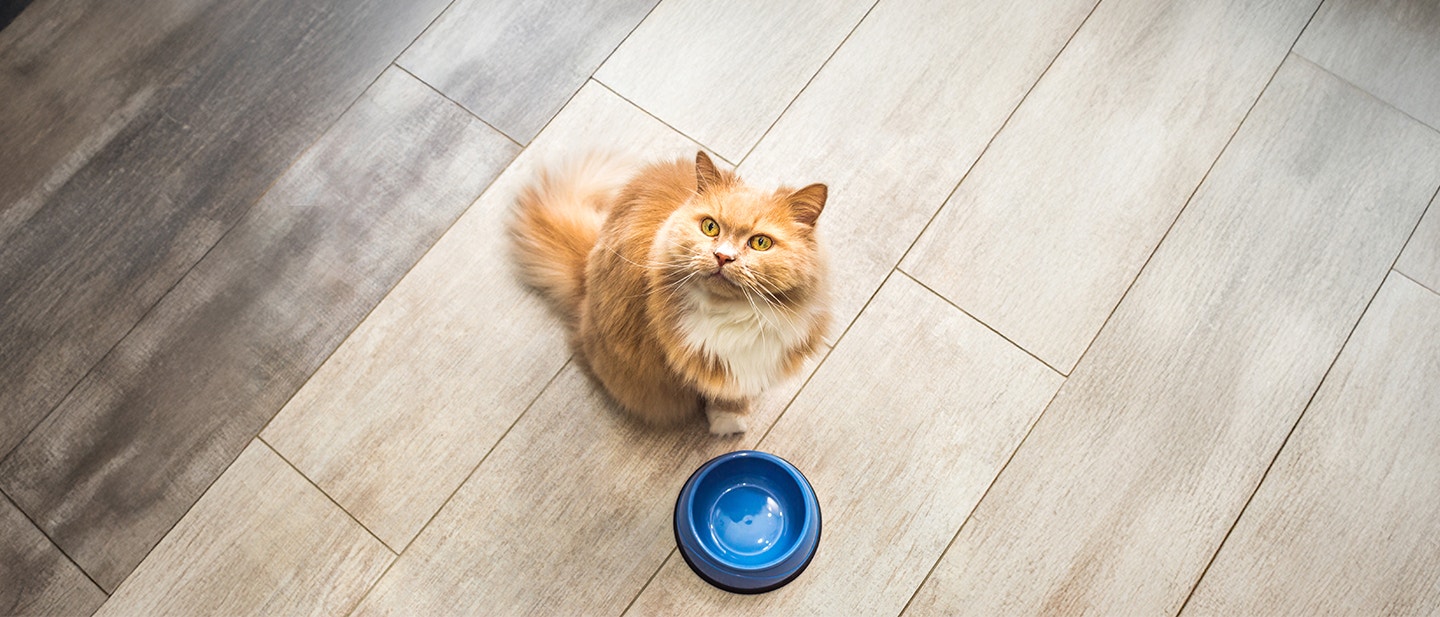
How Often Should I Feed My Cat? | A Guide for Pet Owners
If you’re wondering how often you should feed your cat, you're not alone! Many loving cat owners struggle to find the right balance between overfeeding and underfeeding their furry friends.
But don’t worry — in this guide, we’ll cover all the details of feline feeding, including how often to feed your cat and how much they should eat. We’ll also share tips to help your cat stay healthy and happy.
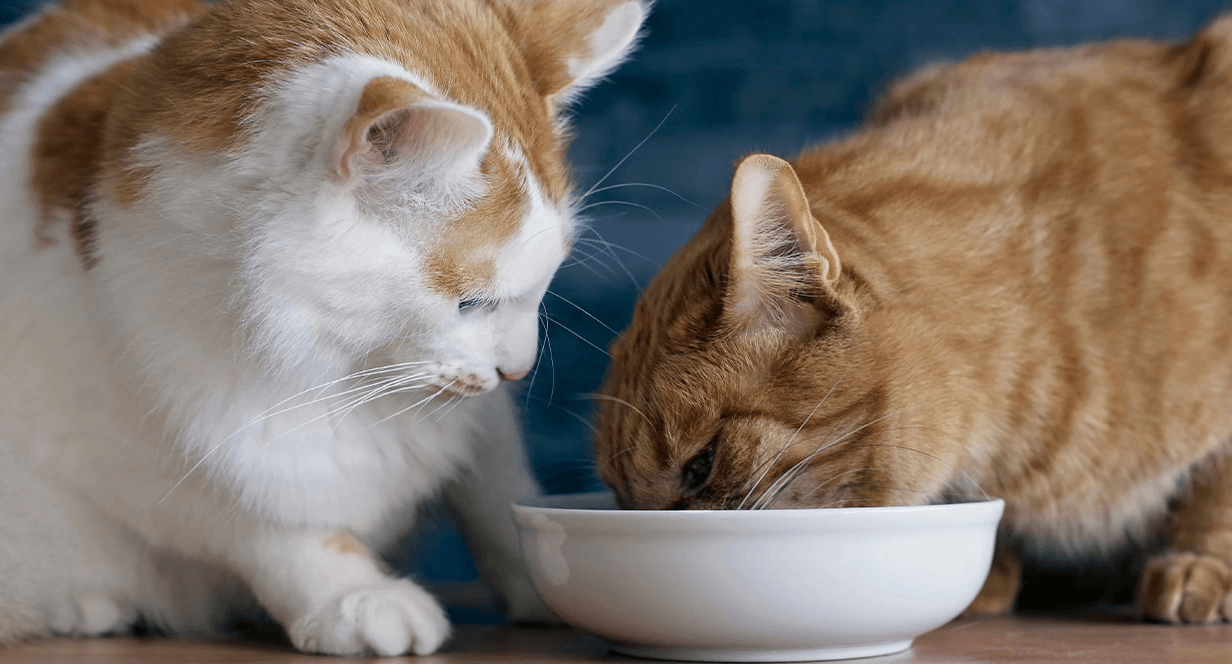
How Often Should I Feed My Cat?
While there’s no one-size-fits-all answer to the question “how often should I feed my cat,” some general guidelines(open in new tab)< can help you determine the feeding schedule that works best for your feline.
Factors To Consider
Age
Kittens(open in new tab) usually require more frequent meals to support their fast-growing bodies. Generally, you should feed kittens(open in new tab) three times a day until they reach around four months of age. Then, you may be able to switch to feeding twice a day.
Activity Level
Like humans, the amount of food your cat needs can depend on their activity level. More active cats may prefer to eat more often than sedentary ones.
Monitor your cat’s energy levels and adjust their feeding schedule accordingly. If you have any questions, it’s best to consult a veterinarian.
Health Needs
Some health conditions may require special feeding schedules. If your cat has specific health needs, it’s best to consult your veterinarian(open in new tab) for personalized recommendations.
Your Schedule
If you work long hours or have an unpredictable schedule, twice-a-day feedings might be the easiest to implement.
But if you’re home all day or have more flexibility, you may find that you and your cat prefer to break those bigger feeds into three or four smaller meals throughout the day.
Timing
Once your cat is at least four months old, they’ll likely be ready for a twice-a-day feeding schedule.
Keep in mind that the exact timing depends on your family’s schedule as well as your cat’s needs and preferences. You may find that adjusting the time of their meals by an hour or two can make a big difference in their appetite and energy levels.
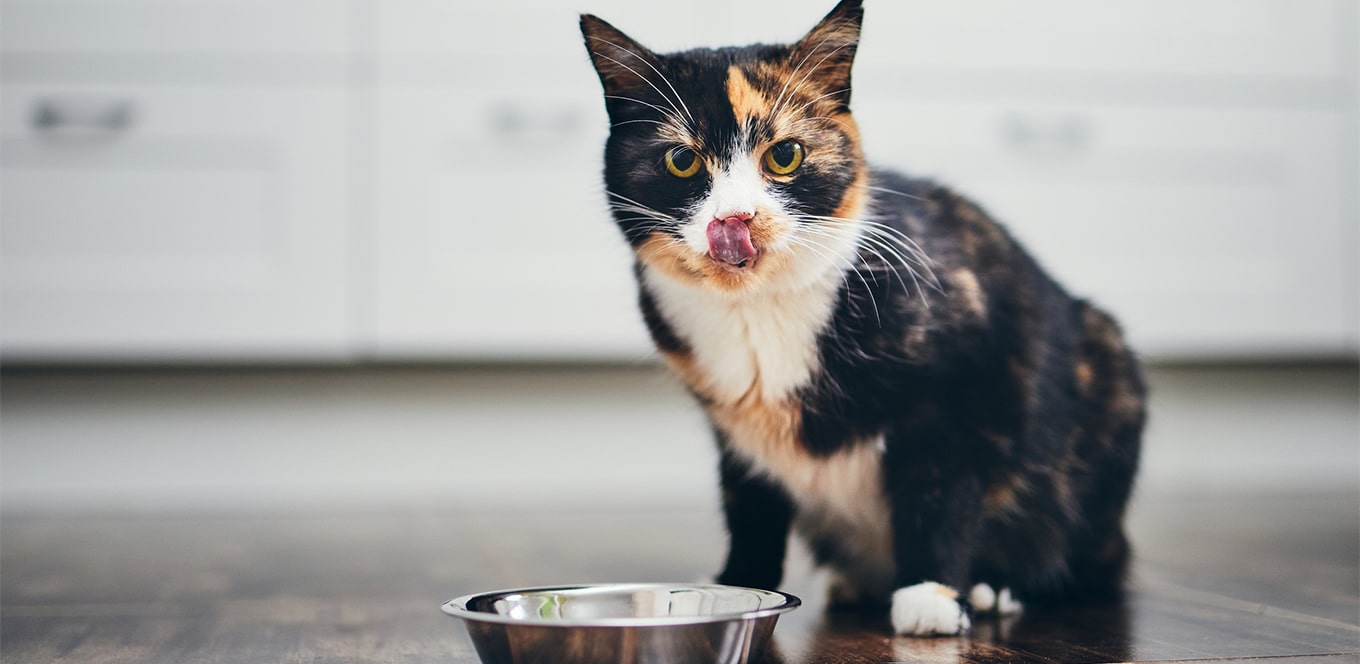
Cat Feeding Tips
Now that you know how often to feed your cat, here are some additional tips for helping keep them happy and healthy.
1) Establish a Feeding Schedule
Cats are creatures of habit. Feeding them at the same time each day helps regulate their digestive system and can even prevent behavioral problems.
Find a feeding schedule that works for both of you and stick to it as closely as possible.
The Problem with Free Feeding
You may be tempted to allow your cat to graze on dry food throughout the day — known as free feeding. Maybe you’ve even tried filling a feeder with dry kibble and only refilling it when it runs out, which could be days or even weeks.
This might seem convenient, but free feeding can lead to several problems, including overeating, obesity, and picky eating habits(open in new tab). It also makes it harder for you to monitor your cat’s food intake and detect changes in appetite or behavior.
Also, dry food can become stale if left out too long. Then your cat may find it unpalatable and may miss out on the nutritional value of the meal.
Sticking to scheduled, portion-controlled meals for your cat’s health and well-being is usually the best option. This way, you have more control over your cat’s diet and food intake.
If you’re going out of town, consider boarding your cat or hiring a cat sitter so their feeding schedule can stay the same.
The Importance of Portion Control
Obesity is dangerous for cats. It can lead to a variety of health problems, such as diabetes, joint pain, and heart disease. Being overweight can even shorten your kitty’s lifespan(open in new tab). That’s why portion control is important when feeding your cat.
Remember that as your cat ages, their dietary needs may change, so it’s important to regularly assess their portion size to ensure they’re eating enough but not too much.
Follow the serving recommendations on your cat’s food packaging and always consult your veterinarian to determine how much food your cat needs based on age, weight(open in new tab), and activity level.
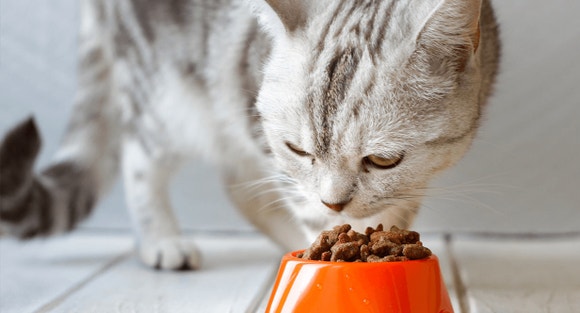
2) Choose the Right Type and Amount of Food
When feeding your cat, not all food is created equal. Choosing a high-quality(open in new tab), nutritionally balanced food that meets your cat’s specific needs is essential.
IAMS™(open in new tab) cat food is an excellent choice! We offer a variety of formulas for cats at different life stages and with different dietary requirements.
Our science-led recipes feature a tailored blend of natural fibers, wholesome grains, and omega-6 fatty acids to help support your cat’s digestion, energy, skin, and coat. Take our Cat Food Quiz(open in new tab) to help determine which food is best for your feline.
How Much Food Your Cat Needs
Once you pick a cat food, follow the feeding recommendations on the packaging.
For example, 12-week-old kittens need ½ cup of IAMS™ Proactive Health™ Healthy Kitten(open in new tab) each day, while a 16-pound adult cat would require ¾ to 1 cup of (open in new tab)IAMS™ Proactive Health™ Healthy Adult with Chicken(open in new tab) daily.
Wet food can be harder to measure because cats may only need part of a can/container at a given feeding time depending on the size of the container. For easier feeding, consider IAMS™ Perfect Portions(open in new tab).
This wet food comes with two individually sealed meals in each container, allowing you to give your feline a fresh meal each time without messy leftovers to store.
The Right Feeding Dish
The type of dish you use to feed your cat can also make a difference in their eating habits. Cats have sensitive whiskers and may not like eating out of deep or narrow bowls, as the sides may touch their face.
A shallow, wide bowl is ideal for most cats, but some may prefer a flat plate or an interactive feeder that keeps them mentally stimulated while eating.
You may need to experiment and see which dish your cat prefers. And if you have more than one cat, you’ll want to give them each their own bowl.
The Right Amount of Variety
While cats like to have consistent mealtimes, that doesn’t mean you need to feed them the exact same flavor and type of food daily. Adding variety to their meals can often help to encourage them to eat and prevent boredom at mealtime.
With that said, it’s best to stick to one brand of food to avoid potential digestive issues. If you do need to switch brands for any reason, make changes slowly and mix their food over time to ease their transition.
To do this, start by mixing in small amounts of the new food with their usual one, and gradually increase the ratio over time. This will help your cat slowly adjust to the new food.
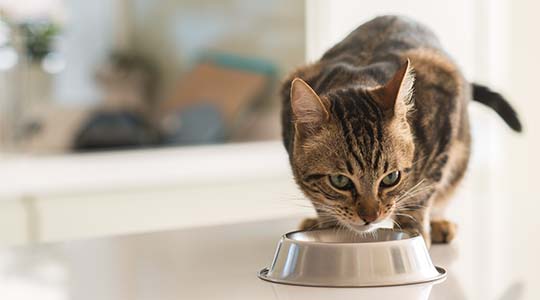
3) Remember the Water
Water is essential for your cat’s overall health and well-being. Dehydration can negatively impact your cat's health, so make sure they always have access to fresh, clean water.
How much water your cat needs depends on their diet. Cats that eat dry kibble generally need more water since they’re not getting the moisture that wet food contains. One way to encourage your cat to drink more might be by placing multiple bowls around your house, especially in the areas your cat tends to visit often.
If you notice your cat snubbing their water bowl and drinking out of the toilet instead, it could be a sign that they prefer running water. Consider switching to a pet fountain, which mimics running water and may entice them to drink more.
4) Watch for Signs of Trouble
When feeding your cat, keep an eye out for any signs of trouble(open in new tab), such as:
Changes in appetite
Weight loss
Weight gain
Vomiting
Diarrhea
Excessive thirst
Not eating for 24 hours
If you notice anything concerning, talk to your veterinarian right away, as there could be an underlying health issue to address.
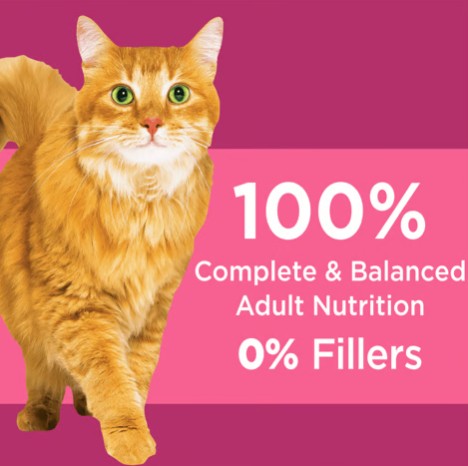
Feed Your Cat Confidently With IAMS™!
Now, you know the answer to the question, “How often should I feed my cat?”, and you have a better understanding of what to feed them and how to make sure they stay hydrated. You’re well on your way to confidently feeding your furry friend.
But with so many cat food options on the market, choosing the right one can feel overwhelming. That’s where IAMS™ comes in. Our high-quality cat food(open in new tab) is specially formulated to meet your cat’s nutritional needs and support their overall health.
With various flavors and options designed for all stages of life, you can trust the IAMS™(open in new tab) Brand to keep your feline companion healthy and happy!
